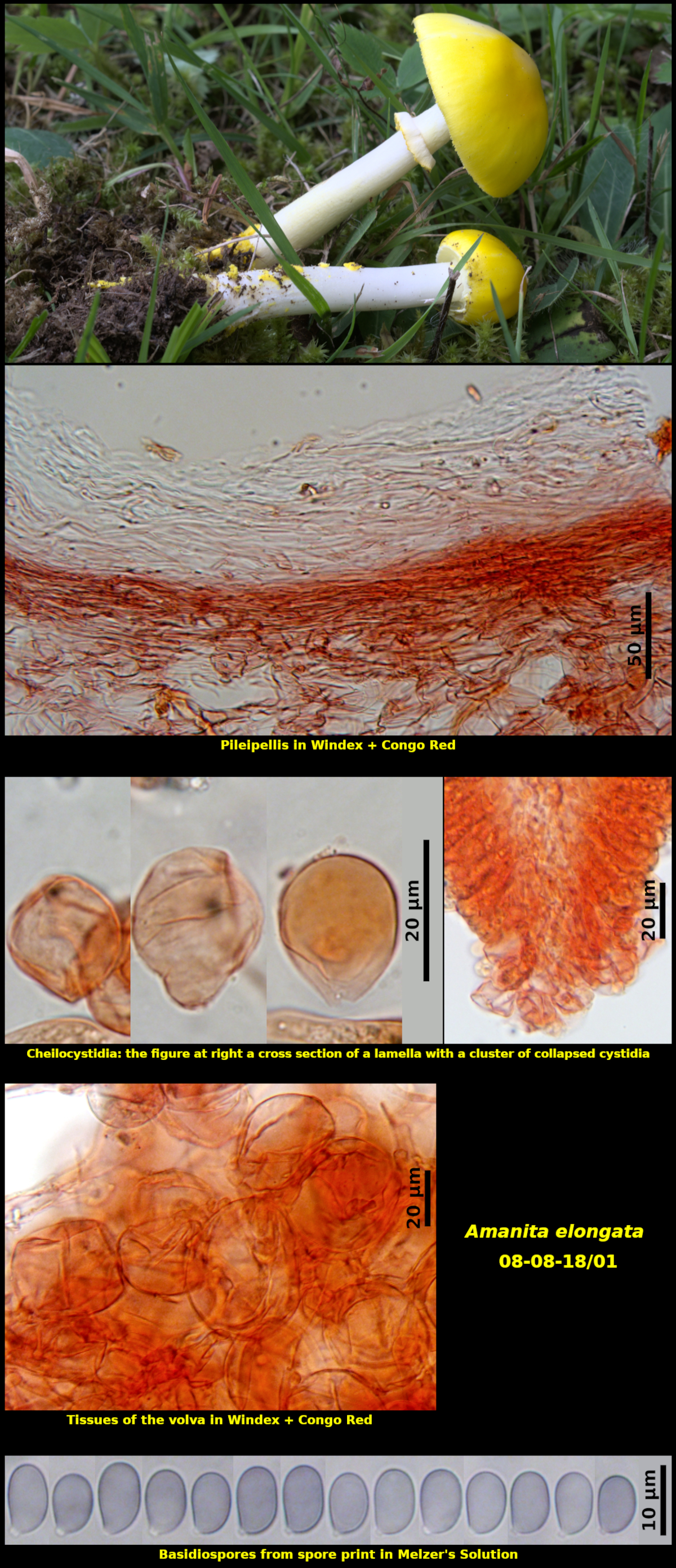Fleshy Fungi of New Brunswick >> Amanita elongata
Amanita elongata Peck

Gregarious (2) in soil among mosses and lawn grass at margin of woods, associated with Abies balsamea and possibly Betula cordifolia (further away than the A. balsamea), Little Lepreau, New Brunswick (08-08-18/01).
Pileus convex-hemispherical at first, expanding to more broadly conic-convex at maturity, without an umbo, moist, glabrous or with an inconspicuous marginal fringe of yellow universal veil fragments, obscurely striate at the marginal 1-2 mm, bright yellow (HSV55-60:50-60:100), 40 mm in diameter. Stipe equal down to the slightly enlarged base, white to very slightly yellowish (HSV55:03-05:100), with a conspicuous annulus, glabrous below the annulus, solid, dry, 78-80 X 7-8 mm. Lamellae white, close to crowded, free, not marginate. Annulus membranous, white above, very pale yellow (HSV55:03-05:100) below, with a bright yellow margin. Volva entirely friable and remaining as bright yellow (HSV55:60:100) scales, lightly adhering to the stipe or becoming detached. Flesh concolorous with the surface tissues in the area immediately below the pileipellis, white elsewhere, with a nondescript mushroom odour.
Basidiospores white to slightly yellow in spore sprint, with spore print strongly hydrophilic and absorbing water rapidly, ellipsoidal to obovoid, smooth, strongly amyloid, 8.2-10.2 x 5.3-6.2 µm, Q = 1.44-1.70 (average[44]: 9.1 x 5.9 µm, Q = 1.56). Basidia clavate, 4-spored, lacking a basal clamp connection. Pileipellis a thick ixocutis above a subpellis of radially-arranged parallel hyphae. Cheilocystidia represented by fragile subglobose to globose cells distributed along the margins of the lamellae, about 18-32 x 15-24 µm. Volva a dense tissue of sphaerocysts embedded among narrow branched hyphae. Clamp connections lacking.
Similar to A. flavoconia and A. muscaria, A. elongata is an eastern North American species distinuished by its bright yellow pileus lacking any universal veil fragments, a white stipe, and a bright yellow volva that breaks up during expansion of the basidioma, leaving scattered fragments in the soil.
Photograph: D. Malloch (08-08-18/01).